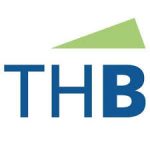

The automatic procedure for the model reduction is implemented in the modeling and simulation environment ProMoT/Diana. ProMoT is a modeling tool written in Common Lisp with a graphical user interface written in Java. ProMoT supports the structured implementation of dynamic models described by systems of nonlinear implicit differential algebraic equations. ProMoT itself is a purely symbolic modeling tool and has no restriction with respect to numerical properties of the models. The point is to keep the model formulation separate from numerical requirements. ProMoT translates symbolic model information into simulation code for a number of numerical simulation programs, one of which is Diana.
Diana is a simulation tool for the solution and nonlinear analysis of differential algebraic systems. The numerical core of Diana is written in C++. Model equations have to be implemented in C++ as an Equation Set Object (ESO) using CAPE-OPEN standard interfaces. The model implementation is done automatically by ProMoT.
So ProMoT provides Equation Set Objects to Diana and Diana consumes Equation Set Objects.
The automatic procedure for model reduction of differential algebraic systems described in the paper is an enhancement to ProMoT/Diana. CO-LaN welcomes the continuous usage of CAPE-OPEN Numerical interface specifications in ProMoT/Diana.
